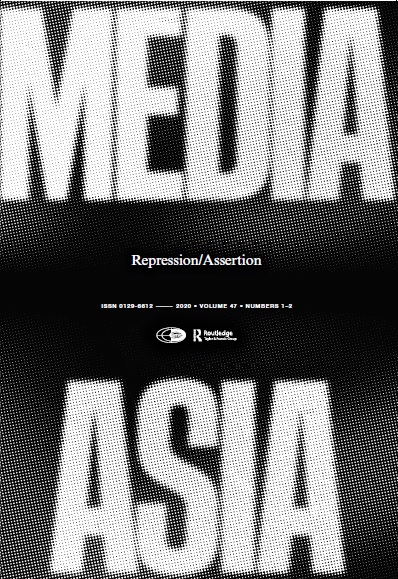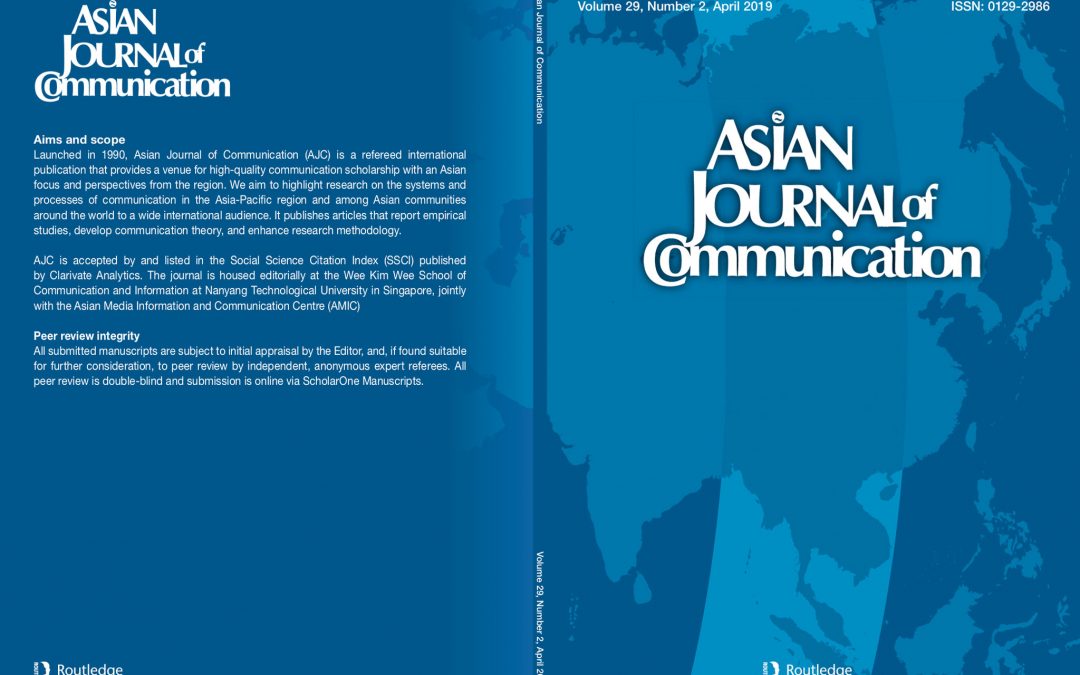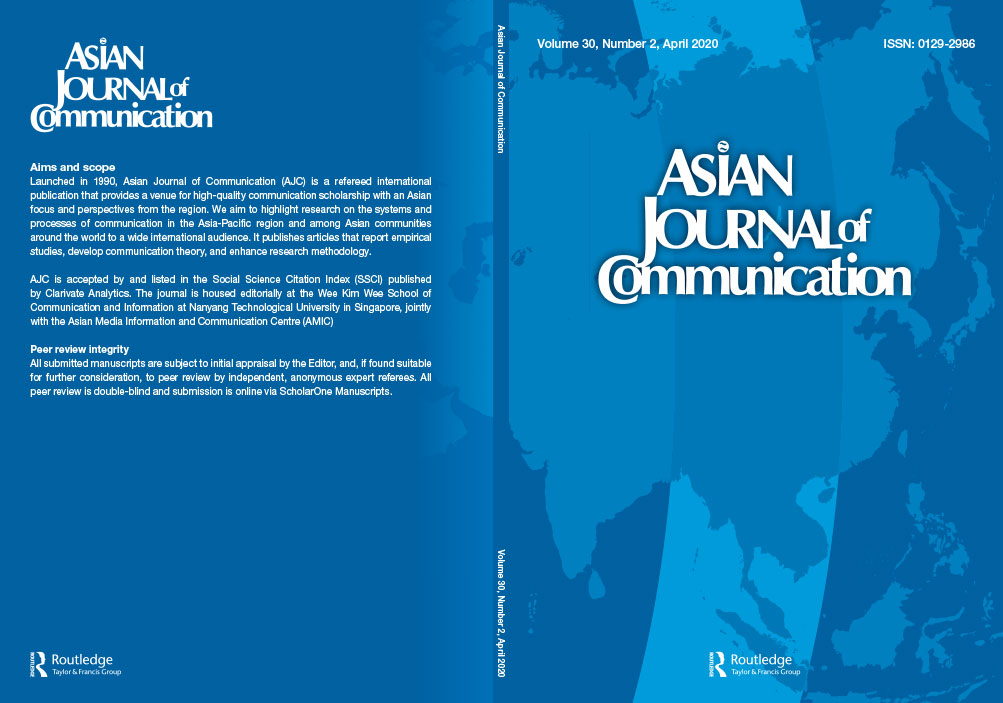
Download Media Asia’s Repression/Assertion issue now

Download Media Asia’s Repression/Assertion issue now
“Repression/Assertion” is available for a limited time.
From now until December 31, 2020, all contents of Media Asia’s Volume 47, Numbers 1-2 may be read and downloaded for free (https://www.tandfonline.com/toc/rmea20/47/1-2?nav=tocList).
Media Asia is a quarterly peer reviewed journal published by the Asian Media Information and Communication Centre (AMIC) and Routledge Taylor & Francis Group.
The “Repression/Assertion issue consists of one editorial, four refereed articles and three commentaries.
Editorial: Realities of repression, intricacies of assertion
By D. A. Arao, L. Brooten, P. Custodio, R. Du, M. T. M. Rivera, and N. Y. Zhang
https://www.tandfonline.com/doi/full/10.1080/01296612.2020.1829364
The danger of words: major challenges facing Myanmar journalists on reporting the Rohingya conflict
By N. Lynn
https://www.tandfonline.com/doi/full/10.1080/01296612.2020.1824569
Work-related sexual harassment and coping techniques: the case of Indonesian female journalists
By D. N. Simorangkir
https://www.tandfonline.com/doi/full/10.1080/01296612.2020.1812175
Social media and disinformation in war propaganda: how Afghan government and the Taliban use Twitter
By H. M. Bahar
https://www.tandfonline.com/doi/full/10.1080/01296612.2020.1822634
How do leading companies in Greater China communicate CSR through corporate websites? A comparative study of mainland China, Hong Kong and Taiwan
By M. Zhao
https://www.tandfonline.com/doi/full/10.1080/01296612.2020.1822635
Commentary: COVID-19 and social-politics of medical misinformation on social media in Pakistan
By M. Ittefaq, S. A. Hussain, and M. Fatima
https://www.tandfonline.com/doi/full/10.1080/01296612.2020.1817264
Commentary: Muzzling the media: the perils of the critical press in the Philippines
By B. Puente
https://www.tandfonline.com/doi/full/10.1080/01296612.2020.1818172
Commentary: Growth of a young journalist amid the pandemic and media repression
By Sammy Westfall
https://www.tandfonline.com/doi/full/10.1080/01296612.2020.1824342
Danilo Araña Arao (University of the Philippines Diliman) is the editor of Media Asia. The associate editors are Lisa Brooten (Southern Illinois University Carbondale), Pamela Custodio (University of the Philippines Los Baños), Roselyn Du (California State University Fullerton), Ma. Theresa M. Rivera (Far Eastern University Manila) and Nick Y. Zhang (Hong Kong Baptist University).
(end)



